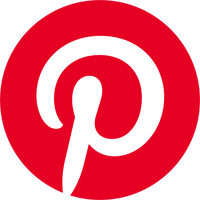
In the beauty and wellness segment, a strong content strategy matters more than ever. Buyers often make their decisions emotionally – studies show that up to 95% of all purchasing decisions are made unconsciously [1] . At the same time, customers expect well-founded and trustworthy information, especially regarding skincare, health, or wellness [2] . The best strategy therefore combines factual content (e.g., active ingredients, studies) with emotional appeal (lifestyle, well-being). This builds trust and generates interest in your products.
Skin care: Thematically deep and customer-centric
Skincare is the largest segment in the cosmetics industry – around 40% of the global market is accounted for by skincare products [3] . To stay visible here, you should structure content around clearly defined topic clusters. Choose a central pillar topic like anti-aging and develop suitable subtopics such as "reducing wrinkles," "brightening complexion," or "moisturizing." This way, you offer added value and position yourself as an expert.
Here’s how to do it:
- Customer focus: Answer specific questions from your target audience, such as "What helps with dark spots?" or "Which cream is suitable for people over 50?" Focus on their needs and pain points.
- SEO: Use long-tail keywords and formats like advice articles, tutorials, or comparison tables to be found organically. By providing thematic depth, you signal relevance to both users and search engines.
- Trust: Explain ingredients like retinol or hyaluronic acid in an easy-to-understand manner and, if possible, substantiate their benefits with studies. Facts build credibility.
- Social proof: 70% of beauty purchase decisions are influenced by social media [4] – so utilize influencer collaborations and authentic customer photos. Real testimonials on Instagram and other social media platforms increase credibility and act as social proof.
Men's cosmetics: clear, functional, confident
Men's grooming is booming – more and more men see cosmetics as a part of self-care, not vanity [5] . Today, the segment ranges from beard care and shower gel to anti-aging products for men. This target group wants pragmatic information and straightforward solutions.
Here’s how to do it:
- Tonality: Use clear, concise product descriptions that emphasize benefits and efficiency. Male customers appreciate a sober, functional tone without any jargon.
- Content topics: Guides like "Beard Care Made Easy" or "Skin Care After Shaving" are well-received. Such content conveys know-how without becoming overly complex.
- Visuals: Before-and-after photos or real testimonials from men appear particularly credible. They directly demonstrate the benefits (e.g., well-groomed beard, clear skin) and reduce skepticism.
- Market trend: Over 50% of men are already actively investing in skincare [6] – younger generations in particular are open to new things. Therefore, target your content to beginners who are just developing a routine.
Supplements: Facts + Trust = Conversion
The German market for dietary supplements is growing steadily: in 2023, sales reached approximately €1.78 billion [7] . Surveys show that more than half of Germans regularly take supplements – primarily for immune system support, energy, and general health [8] . This trend represents enormous potential, but also brings with it informed customers who are very keen to monitor their health.
Here’s how to do it:
- Depth of information: Users conduct thorough research. Provide detailed information on dosages, scientific study results, and quality standards. Explain how and why a supplement works. This expert knowledge builds trust among health-conscious buyers.
- SEO: Optimize for specific problem-solution combinations like "magnesium for stress" or "protein for muscle building." Many people search for precisely these terms. With targeted content (blog posts, FAQs), you can address these search queries and attract organic traffic.
- Trust: Display seals of approval, laboratory certificates, or expert quotes on your product pages. Support advertising claims with facts. Users perceive organically found content as significantly more credible than paid advertising [9] . Authentic content (such as blog articles instead of banner ads) therefore increases conversion in this sensitive segment.
- Target groups: Consider older consumers as well: They are increasingly searching online for vitality and joint products. Older consumers will play a larger role in the future – products related to bones and joints are gaining in importance [10] . Therefore, adapt the content and approach to silver agers (e.g., the guide "Fit and Vital at 60+").
Spa & wellness products: Making the experience tangible
Wellness thrives on emotions: Customers want to see, feel, and smell relaxation. At the same time, they expect clear information about the benefits and quality of your offerings. Content in this area must therefore convey both sensory impressions and factual details.
Here’s how to do it:
- Blog & Guide: Topics like "Wellness Trends 2025" or "The Best Self-Care Tips for at Home" position you as an expert source. Helpful blog articles about spas, relaxation, and health increase your brand's professional authority – and ensure customers find you on Google and other search engines.
- Visual content: Use high-quality images and videos that convey a sense of relaxation. For example, show atmospheric shots of home spa scenes, fragrant candles, and happy customers. This appeals to the senses and brings your product promise to life.
- Multi-channel: 74% of consumers very often discover beauty, skincare, or wellness products through social media [11] – therefore, distribute your content across channels. A blog article, for example, can be shared via Instagram posts, Pinterest pins, and Facebook. A consistent presence across multiple channels increases reach and ensures recurring touchpoints (keyword: customer journey).
- Email marketing: Don't forget – emails build customer loyalty. Automated birthday greetings or personalized product recommendations via email increase loyalty. Over 90% of companies rely on email marketing as an integral part of customer communication [12] . Use newsletters to keep your community engaged with exclusive wellness tips, discounts, or invitations to events.
Conclusion: Information + Emotion = Success
A strong content strategy captures the tone of your target audience, combines facts with inspiration, and conveys expertise. By cleverly combining knowledge and storytelling, you build long-term trust. This way, curious readers ultimately become loyal customers – and your beauty and wellness business remains on a sustainable growth path.
Sources & further reading
- The Subconscious Mind of the Consumer (And How To Reach It) | Working Knowledge
- healthlinemedia.com – Rebuilding Consumer Trust in Skincare (Report)
- Statistiken zur Schönheits- und Kosmetikindustrie (2025) | 40+ Beauty Industry Statistics You Need to Know to Stay Ahead [2025]
- The Power of Social Media in the Beauty & Cosmetics Industry — PoweredXBeautyBuddy
- Neue Studie: Körperrasur ist für Männer keine Ego-Frage | P&G DACH Presse
- 40+ Beauty Industry Statistics You Need to Know to Stay Ahead [2025]
- Markt für Nahrungsergänzungsmittel boomt – Ärztezeitung
- Forsa-Umfrage zu Nahrungsergänzungsmitteln – IKK classic
- Organisch statt bezahlt: So geht Online-Marketing 2023 – wiasano
- Markt für Nahrungsergänzungsmittel boomt – Ärztezeitung
- The Power of Social Media in the Beauty & Cosmetics Industry — PoweredXBeautyBuddy
- Daten & Fakten zu E-Mail Marketing, die Sie kennen sollten | dialog‹one›



